Lumen is a metabolism tracker (sometimes referred to as a metabolic breath analyzer) that can tell you whether you’re using carbohydrates or fat for fuel. The company calls it the first device designed to help you hack your metabolism.
After a year of following a strict low-carb high-fat ketogenic paleo diet, I decided to give Lumen a try. I used the device every day for over a month, with the goal of learning more about my own metabolism.
I also wanted to see whether the device would be a useful tool for people just starting their journey toward better nutrition and health.
Pros
- Fairly accurate (based on my testing).
- Shows you how your meals impact your metabolism.
- High-quality hardware.
- Motivating smartphone app.
Cons
- Expensive.
- You have to be still and at resting heart rate to get accurate readings.
Why Use Lumen?
From an evolutionary perspective, the human body is meant to be metabolically flexible enough to switch back and forth between using carbs and fat for fuel, depending on the types of food that are available at any given time.
Unfortunately, most modern diets are comprised primarily of highly-processed carbohydrates from sugars, grains and starches. This overconsumption of carbs can lead to a chronic dependence on glucose as a source of fuel, constantly fluctuating energy levels, and insulin resistance (which is a key factor in many metabolic diseases).
The goal of low-carb diets like keto and paleo is to help you adopt eating habits that mimic those of our healthier ancestors, which in turn improves your metabolic flexibility. This improved metabolic flexibility has a wide range of health benefits, such as increased energy, the prevention of weight gain (and weight loss if you have excess body fat), and a reduced risk of developing insulin resistance.
That’s exactly where Lumen can help. It gives you real-time information about your metabolism and guides you towards better dietary habits that enable your body to leverage fat for energy (instead of relying solely on carbs).
Additionally, the Lumen food log (which I discuss later in this article) helps you understand precisely what impact the food you eat has on your metabolism.
How Lumen Works

The idea behind Lumen isn’t new. The device leverages breath analyzers that measure what’s known in clinical terms as respiratory exchange ratio.
Also known as RER, respiratory exchange ratio is a term that describes the ratio between the amount of oxygen (O2) you inhale and the amount of carbon dioxide (CO2) you exhale.
If you follow a high-carb diet (such as the standard American diet), your body only uses carbs for fuel and your breath contains high CO2 levels. In contrast, someone who follows a low-carb high-fat diet — and who thus burns mostly fat for fuel — exhales lower CO2 levels.
Metabolic breath analyzers detect the amount of CO2 in your breath and tell you whether you’re burning carbs or fat for fuel.
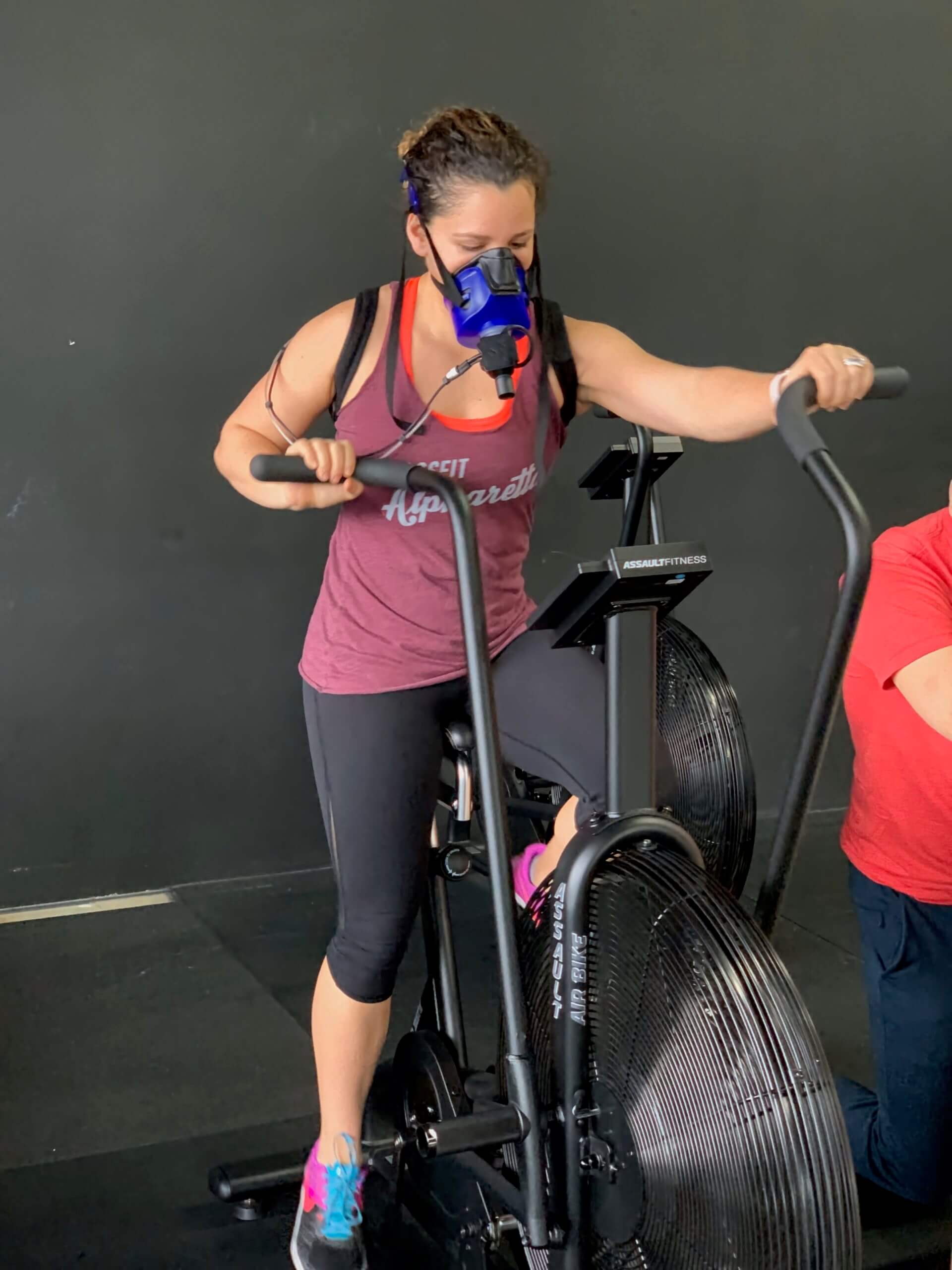
Until recently, RER measurements were only available to patients in clinical settings and professional athletes seeking to hack and improve their metabolism.
Lumen is the first hand-held and portable metabolism tracker that enables people like you and me to get insights into how our metabolism is doing.
From a technical perspective, Lumen consists of a CO2 sensor and a flow meter that measures how much air you inhale and exhale. The device connects to an app running on your phone via Bluetooth, where all your data is stored and interpreted.
How to Use Lumen
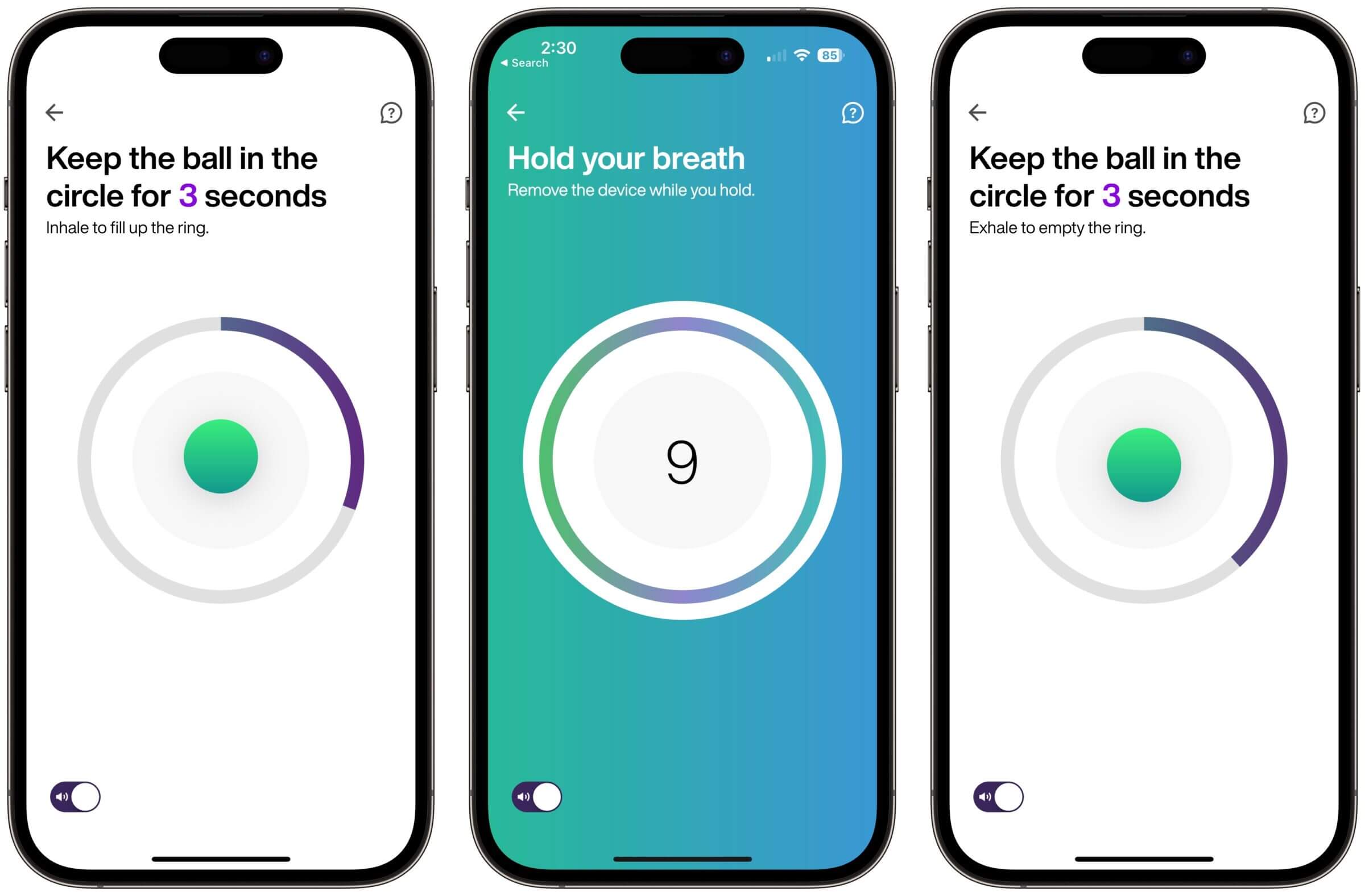
After I received my Lumen, I downloaded the mobile app, signed up for an account, paired the device via Bluetooth and granted the app access to Apple Health. Then I answered a couple of questions about my dietary habits, activity level and sleep patterns (basically all the pillars that make up a healthy lifestyle).
The one thing I noticed during the onboarding process was that the dietary choices I was able to choose from blatantly omitted the only diet I consider optimal for human health — an animal-based or meat-based diet. I complained to Lumen about that and they agreed to add “carnivore” in a future software update.
Then I took a couple of test breaths to get used to the mechanics of breathing through the device. Once I had mastered the breathing technique, the device was ready to go.
My goal with testing Lumen was to confirm my understanding of how my body leverages different types of fuel (carbs or fat) based on how I eat and exercise.
The truth is that I already had a pretty good idea of how my metabolism works from previous testing I had conducted using continuous glucose monitors (CGMs) and ketone breath analyzers.
If you just want to change your diet to improve your health or lose weight, Lumen is a great way to help you understand how your metabolism works and how certain foods impact it.
For example, you might learn that certain types of carbs are more conducive to improving your metabolic flexibility (a key factor in improving your health and losing weight) than others, or that reducing your carb intake improves your energy levels and mental clarity.
After each measurement, Lumen gives you a score from one to five (called a Lumen Level) to indicate if you’re burning mostly fat (levels one and two), carbs (levels four and five) or both (level three) for energy. In a future software update (the feature is currently in beta), Lumen will tell you exactly how much fat and carbs you’re burning.
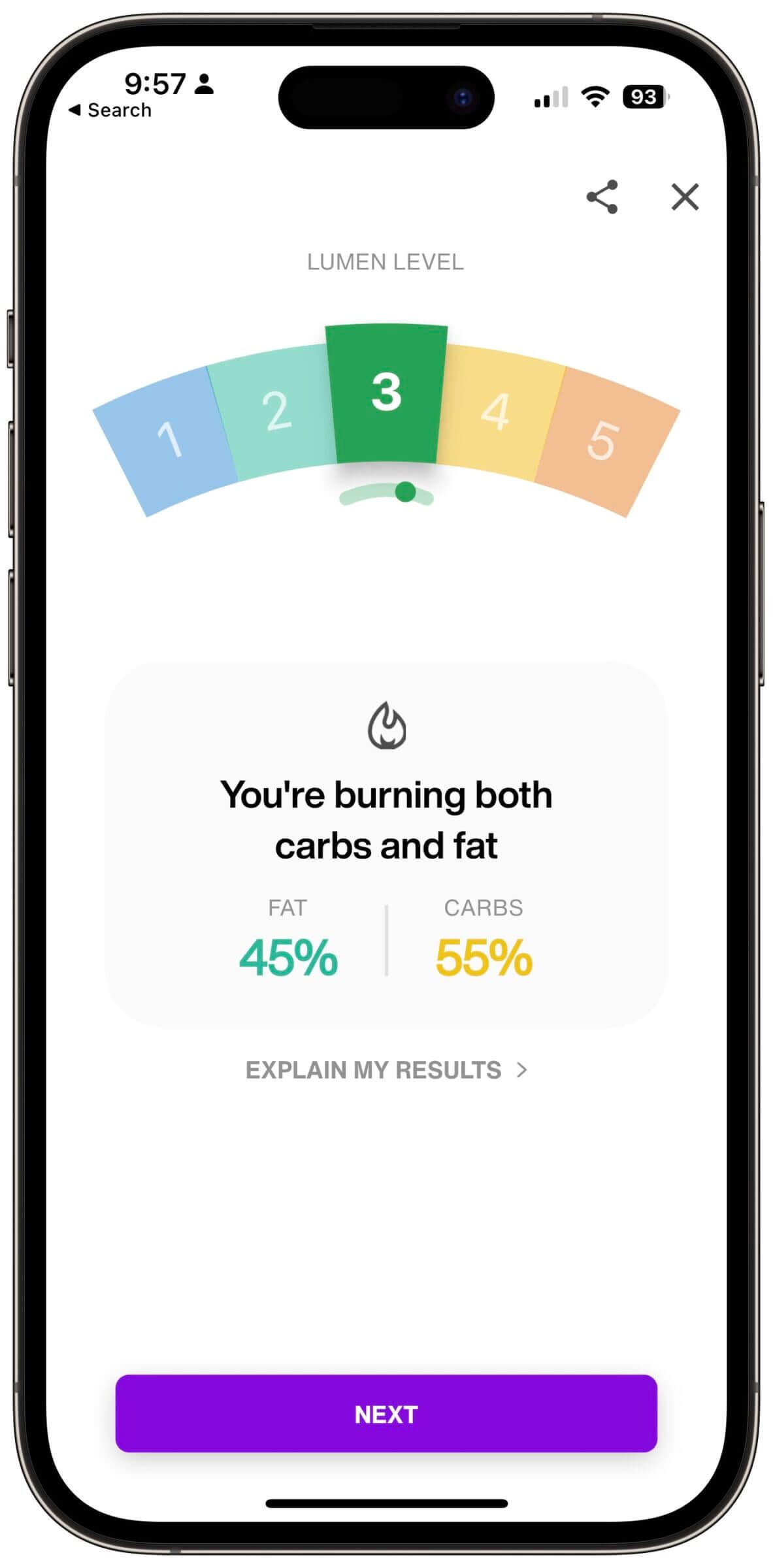
Lumen can support your journey towards better health by encouraging you to take regular measurements and by nudging you to adjust your carbohydrate, protein and fat intake based on personalized meal recommendations.
For example, based on your metabolic flexibility and previous measurements, Lumen might recommend a low-carb day and offer meal inspirations that meet those recommendations.
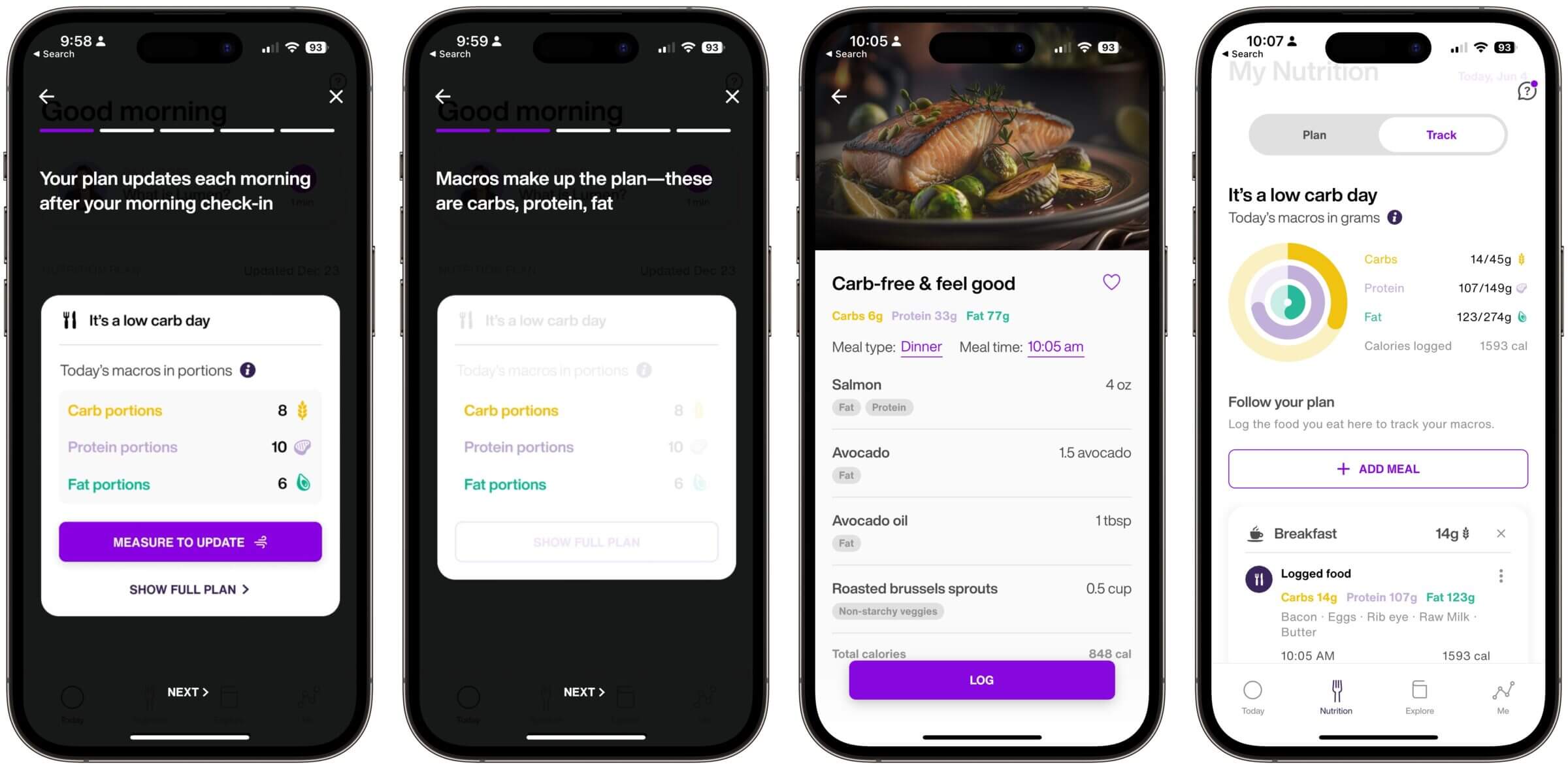
While I’m not a fan of counting macros (i.e., keeping tabs on how much protein, fat and carbs you consume on a given day) because it’s impractical and often shifts the focus from what you eat (which is crucial for health and well-being) to how much you eat (which doesn’t matter as much), I like Lumen’s concept of guiding you with meal inspirations and recipes.
The one thing I don’t like about Lumen’s meal recommendations is the reliance on plant-based foods. As I argue in my article comparing meat vs. plants, I don’t think plants should make up a significant portion of the human diet.
My hope is that Lumen will add more meat-based recipes to its library. Until then, be cautious with these recommendations and understand that animal-based foods should be at the center of a healthy lifestyle.
How Accurate Is Lumen?
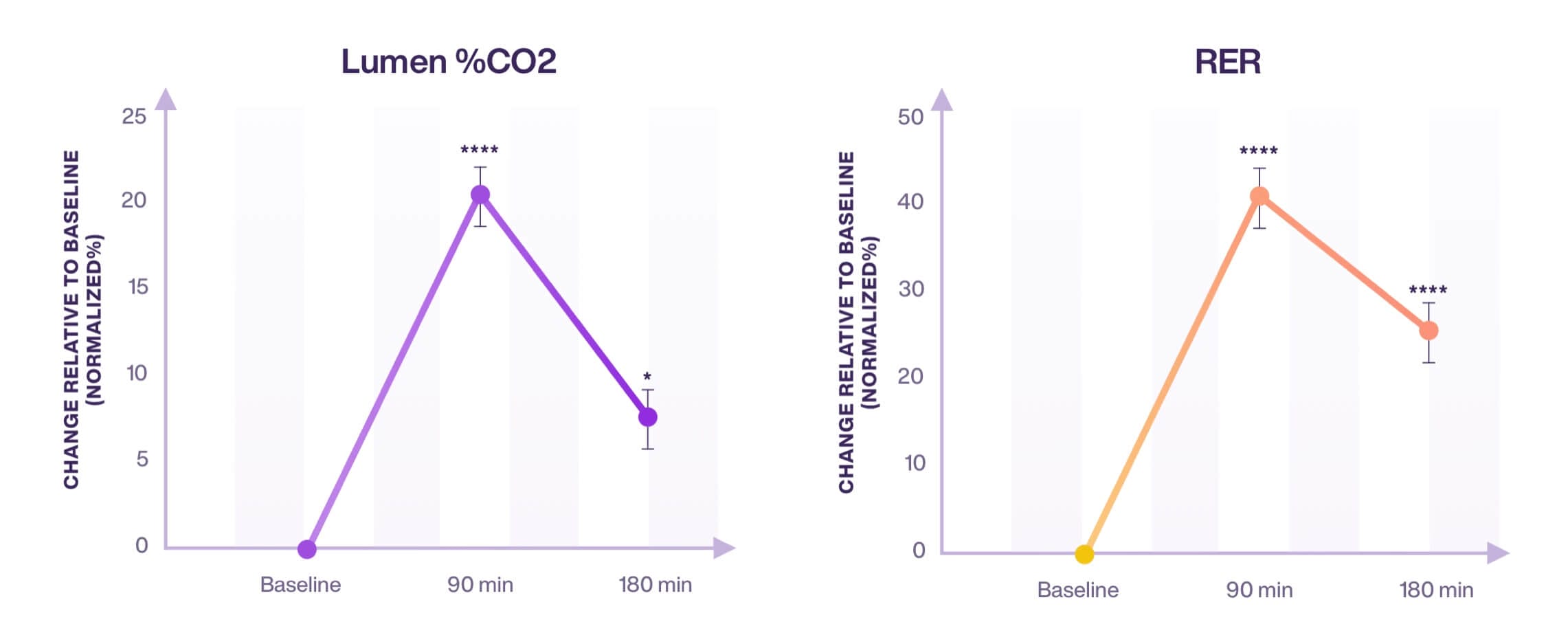
One of the most important aspects of any fitness device that relies on your biometrics is accuracy. With regard to Lumen’s accuracy, the company claims the following:
“Lumen’s technology has been scientifically proven to accurately measure metabolic fuel usage when compared to the gold standard (RER) for measuring metabolism in multiple validation studies.”
More specifically, Lumen says that when measuring metabolism, its results are comparable to those of lab-based RER measurements.
Taking a closer look at the summaries of the validation studies Lumen participated in, you can see that Lumen’s results are in the same ballpark as the results of a metabolic cart (a device used in clinical settings to measure RER).
In other words, Lumen isn’t 100% accurate as far as absolute numbers (i.e., %CO2) are concerned, but it shows the same trends of change in your metabolic rate.
Update: In July 2021, the company announced the results of the first peer-reviewed study involving Lumen, conducted by researchers at the Exercise Physiology Laboratory at San Francisco State University’s Department of Kinesiology.
The authors of the study concluded the following:
“In summary, Lumen can provide valid information regarding an individual’s metabolic state, and in agreement with results from the metabolic cart. Unlike the metabolic cart, Lumen measurement can be performed anywhere, anytime, without the need for a specialized laboratory, equipment, and technical staff. The Lumen device is able to detect changes in metabolism due to dietary intake, similarly to the metabolic cart. The capability of taking metabolic measurements continuously outside of laboratory settings can provide new insights about the metabolic state of an individual so as to obtain further knowledge and understanding about metabolism and nutrition.”
— A Handheld Metabolic Device (Lumen) to Measure Fuel Utilization in Healthy Young Adults: Device Validation Study
Based on the evidence I’ve seen — as well as my own Lumen data, which I correlated with the data from a continuous blood glucose monitor and blood ketone tests — I’d say that Lumen is accurate most of the time at detecting whether or not my body is burning mostly carbs or mostly fat.
However, right before publishing this article, I noticed that I had high Lumen Levels in the morning (indicating that I was burning mostly carbs), with blood ketone levels of 1.5 mmol/L.
I didn’t think you could have high ketone levels while burning mostly carbs. So I talked to Dr. Ben Bikman, a university professor who specializes in human metabolism. He told me that it’s pretty much impossible under normal circumstances to be in ketosis while burning carbs.
What I realized in hindsight is that my inaccurate readings were likely due to having an elevated heart rate. Lumen says that your heart rate should be near your resting heart rate before taking a measurement, because an elevated heart rate can negatively influence CO2 readings and thus produce misleading results.
In fact, I went back and reviewed the San Francisco State University study mentioned above and realized that the researchers made sure participants were in a relaxed state before performing their measurements.
On a few occasions, I wasn’t patient enough to sit and wait for my heart rate to come down before using Lumen.
Additionally, Lumen says you should wait at least 30 minutes after waking up or working out before using the device. This is because both actions (waking up and working out) cause your body to release cortisol, which often results in higher blood glucose and ketone levels. As such, failing to wait at least 30 minutes can produce misleading results.
We’ll talk more about the practical implications of these guidelines in the section below about what Lumen could do better.
What’s In the Box?
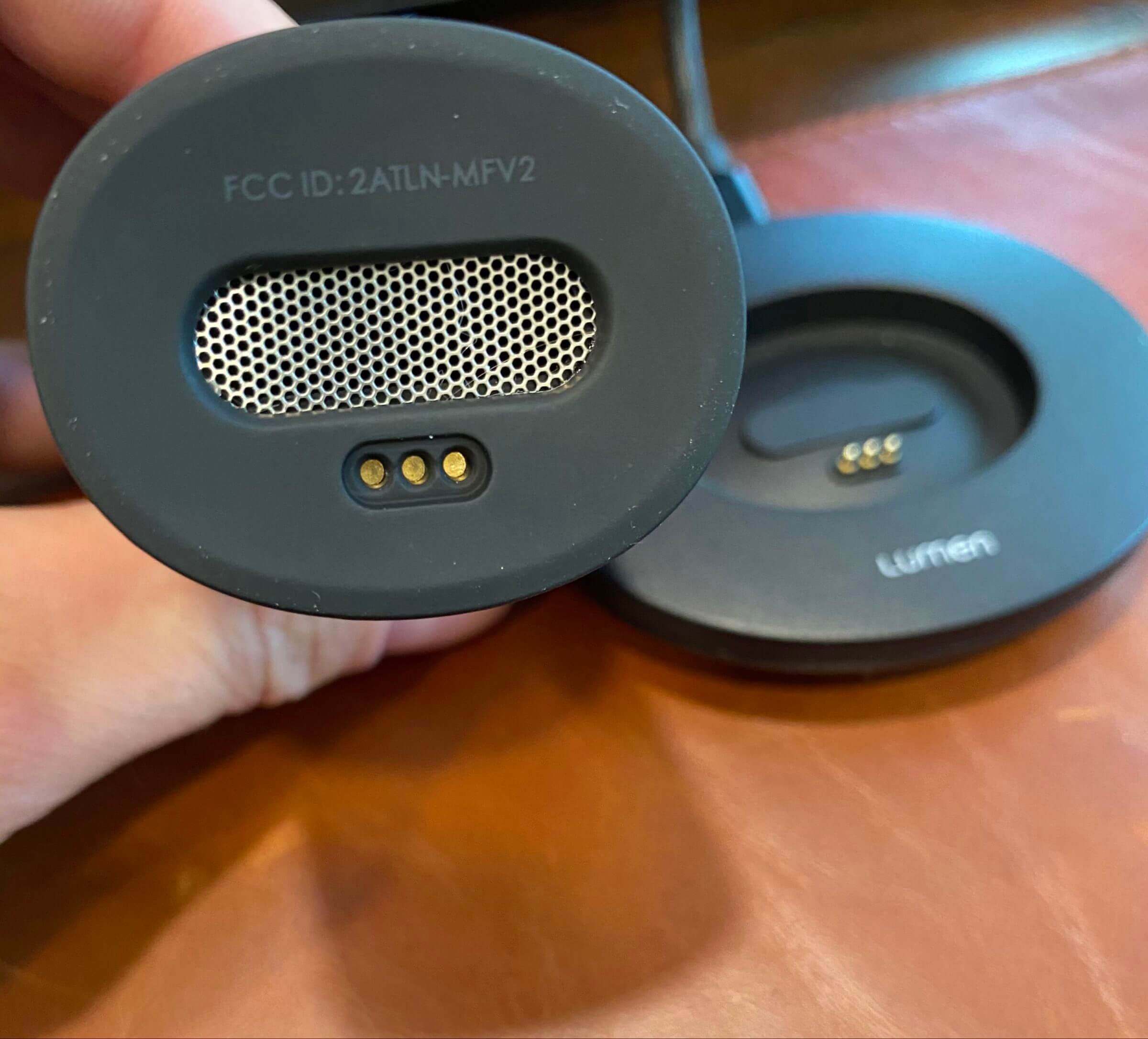
When you buy Lumen, you get the flow sensor (i.e., the main Lumen device), a charging dock, and a USB-C charging cable.
The sensor hardware is made from a plastic that feels very premium. The mouthpiece is polished metal, as is the cap that is kept in place securely using magnets. On the front of the device, there’s a single button that turns the device on. (Lumen turns itself off automatically.)
To charge Lumen, simply place it on top of the charging dock with the power button facing forward, and connect the dock to your computer via the included USB-C cable. (You can also use any compatible wall plug adapter.)
I don’t know how long the battery lasts or how long it takes to charge the device, because I only take it out of the charger to use it. After each use, I put it right back.
Lumen Cost and Subscription
The Lumen metabolism tracker costs $199 and includes one free month of membership. Once the free membership expires, you’ll still be able to take unlimited real-time metabolic measurements with no subscription required.
But if you decide to extend your membership for $19 per month, you get the following additional benefits:
- Lifestyle insights and recommendations.
- Daily personalized nutrition plan.
- Macro-based meal suggestions.
- Metabolic coaching and support.
- Integration with Apple Health, Google Fit and Garmin.
It’s worth noting that Lumen used to require a prepaid subscription, so I appreciate that you can now purchase the device and get unlimited measurements for no additional cost. However, if you want to get the most out of Lumen, I recommend signing up for the optional membership.
As you can see — and as almost all Lumen reviews point out — the device is certainly not inexpensive. But looking back, I’ve spent more money overall on blood glucose and ketone test strips. In other words, whether it offers a good value depends on how consistently you use it over time.
If you’d like to give Lumen a try, make sure to use the discount code MK to get 10% off.
Is Lumen Worth It?
In my opinion, the answer to this question depends on who you are and what your goals are. If you’re already following a well-designed ketogenic diet that’s based on unprocessed foods (as opposed to “dirty keto”), Lumen can’t tell you much that you don’t already know.
However, if you’re not sure how particular foods interact with you body, then Lumen can be a valuable tool that helps you make adjustments and better optimize your diet.
I’d also recommend Lumen to those following a low-carb diet other than keto (depending on your definition of “low-carb”) to test whether your efforts are actually helping to improve your metabolic flexibility. In other words, you can think of Lumen as a validation tool to ensure you’re on the right track.
Additionally, Lumen can be a convenient alternative to blood glucose and ketone monitors. Of course, Lumen and blood testers test for entirely different biometric parameters, but both can give you an indication of whether or not your body is burning fat or carbs for energy.
Lumen Food Log and Other Features
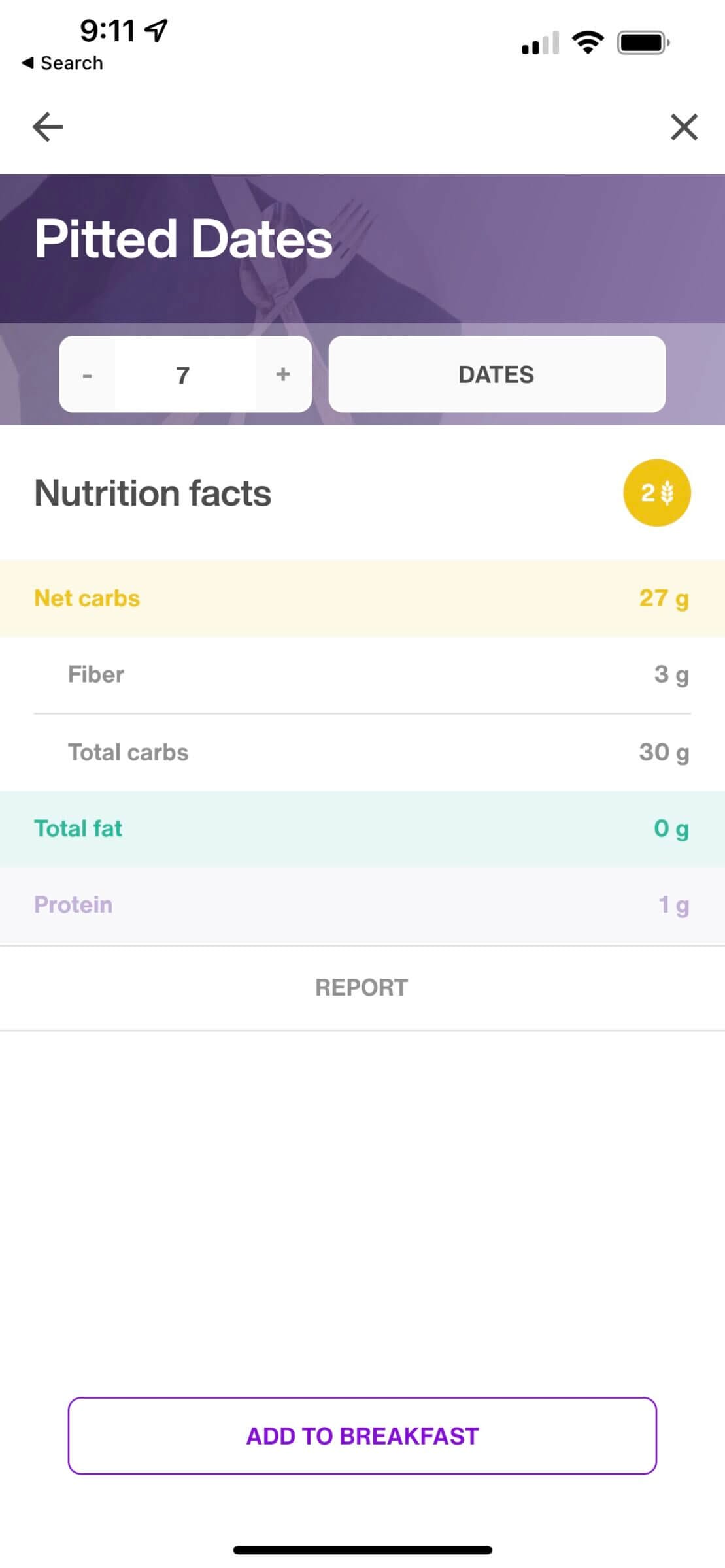
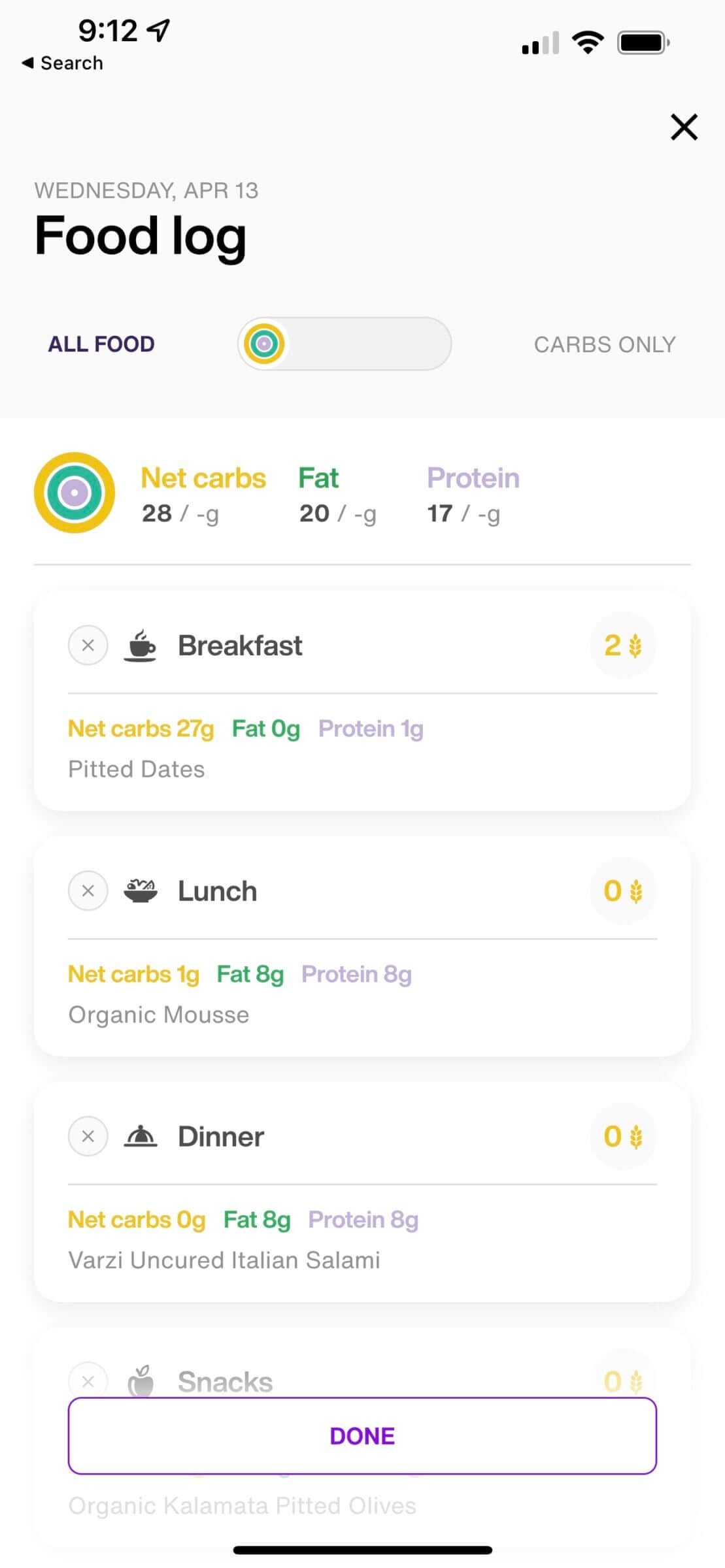
Lumen added a food log feature in March 2022, and I think it’s a valuable addition to the platform because it provides actionable insights into how particular foods affect your metabolism.
People can react differently to different types of food. Just because my body handles a certain type of food well doesn’t mean yours does, and the food log allows you to correlate how the foods you consume affect your body on an individual level instead of relying on general guidelines.
The food log also makes it easy to track foods by scanning their bar codes, and integrates with a number of third-party platforms (such as MyFitnessPal).
Other Features
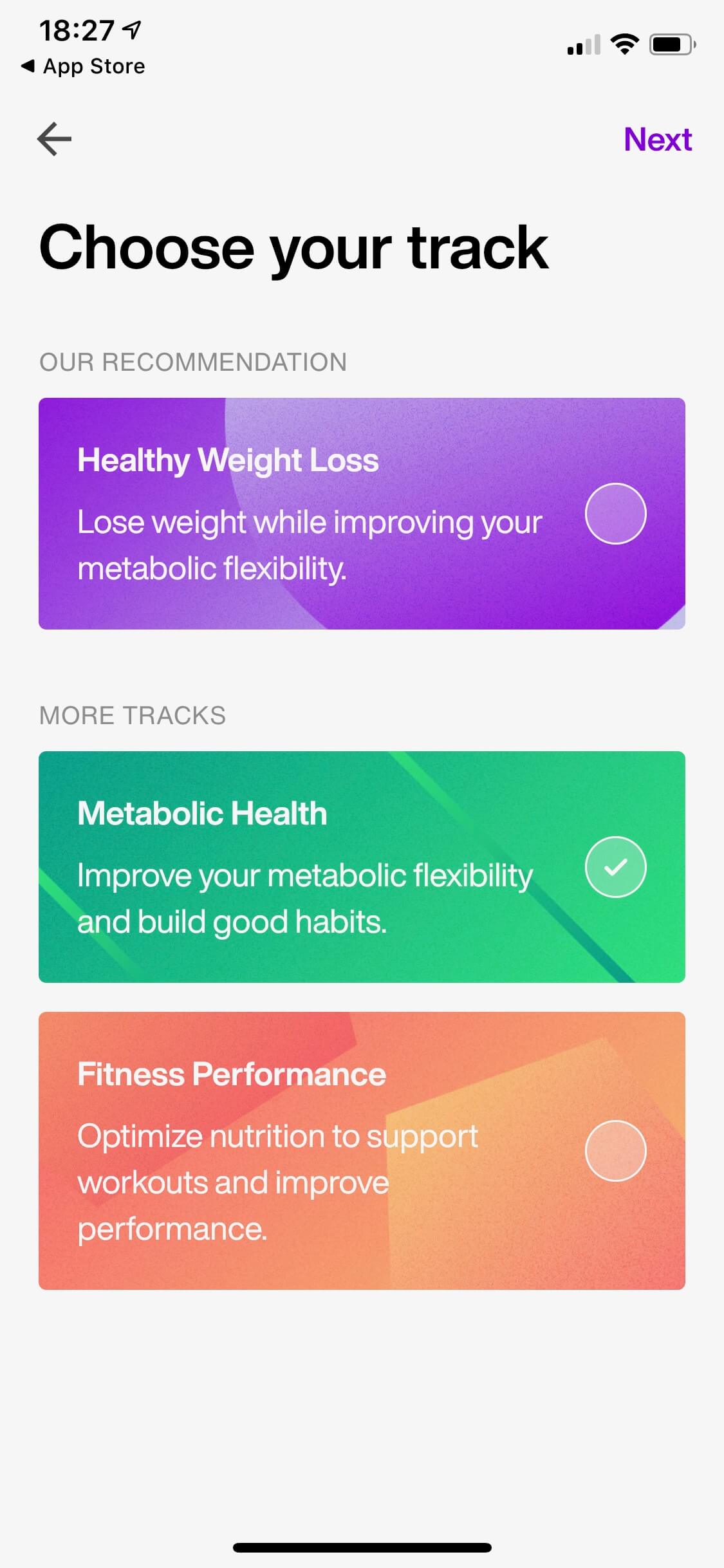

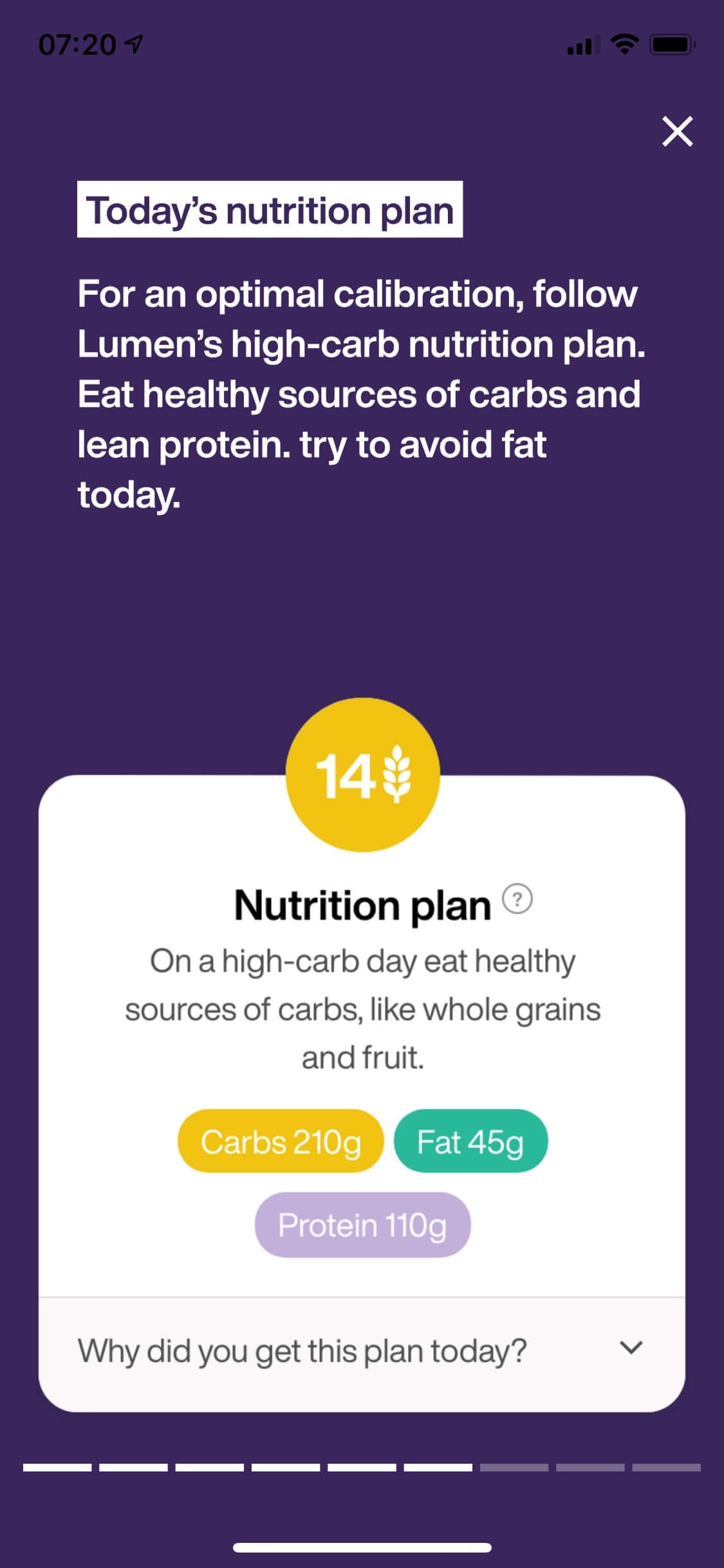
In my opinion, the two most important metrics Lumen can provide are:
- Your current metabolic state.
- Your metabolic flexibility, which Lumen calls “the flex score.” This indicates how easy it is for your body to switch back and forth between different types of fuel.
However, there’s more to Lumen (thanks in large part to its app).
For example, the app provides an extensive library of information, including:
- Nutrition basics.
- Macronutrient data of different foods.
- Lumen basics, including how-to videos.
- Meal inspirations.
- Personalized insights related to the state of your metabolism (e.g., metabolic flexibility).
Frankly, I didn’t dig into any of that information until I started writing this review, because I already have a firm understanding of nutrition science. Plus, I never count my macros, and I know what foods I can and can’t eat given my dietary framework.
But if you’re just at the beginning of your healthy eating journey, the Lumen app provides a wealth of information that I think is worth exploring.
Additionally, Lumen offers an Apple Watch version of its app, which provides a limited set of functionality (such as a carb logger) and at-a-glance insights.

What Lumen Could Improve
The main thing I’d like to see Lumen improve is the inclusion of meat-based diets and meal recommendations. I know that plant-based eating — as misguided and terrible for human health as it may be — is incredibly popular these days, but it would be nice if Lumen offered a meat-based track for those who appreciate the benefits of nose-to-tail eating.
Last but not least, it appears that Lumen is shepherding people towards a low-carb high-fat diet, such as the ketogenic diet, without calling it that. I assume that’s on purpose, so as not to scare people away when they hear the term “keto.”
Maybe that’s the best way to introduce people to low-carb eating, but why not just call it what it is?
Frequently Asked Questions
Lumen is a reliable tool to help you improve your metabolic flexibility and your understanding of how the food you eat impacts your energy levels, weight loss goals and overall health. While Lumen might not be as accurate as clinical-grade breath analyzers, it’s accurate enough to help you identify trends and make better food choices.
I firmly believe that losing weight is the byproduct of achieving metabolic health and flexibility. Enabling your body to burn (its own) fat for energy, instead of relying on dietary carbohydrates, is one of the quickest ways to lose weight (fat) without feeling hungry. Lumen is a great tool to improve your metabolic flexibility, and thus, to help you lose weight quickly and painlessly.
Of course, nutrition is only one of the factors that influence your weight and body fat. So make sure you also focus on proper sleep, regular exercise and the avoidance of endocrine-disrupting chemicals from skincare products, tap water and plastic food storage containers (to name a few).
Check out my articles about the core principles of optimal health and the best diets for weight loss to learn more.
The Lumen flex score goes from 0 to 21, and the higher the score, the better your metabolic flexibility. Scores from 0 to 6 signify low flexibility, 7 to 14 medium flexibility, and 15 to 21 high flexibility.
When I started with Lumen, I assumed that if a blood test shows that I’m in nutritional ketosis (ketone levels above 0.5 mmol/L), that means my cells are using ketone bodies for energy (unless you’re supplementing with exogenous ketones). While that’s true most of the time, it doesn’t have to be.
For example, during intense physical activity, my body releases glycogen — the carrier mechanism of glucose that’s stored in the liver and muscle tissue. When that happens, my blood sugar spikes and my ketone levels go down.
However, that free glucose is used up quickly, in particular by those cells that only use glucose for energy. Since I usually exercize in a fasted state, my body has no other choice than to burn fat for energy. That’s why I usually have very low Lumen levels after a workout. And since my body needs all the ketones it can get at this point, my blood levels are low as well.
That’s one example where low ketone levels and low Lumen levels can happen at the same time.
Remember, low Lumen levels indicate that you’re burning (mostly) fat. So you’d normally expect higher ketone levels.
In most (if not all) other cases, elevated ketone levels in your bloodstream are a clear indication that your cells are using fat for fuel and not carbs. So if you see ketone levels of above 0.5 mmol/L but a Lumen score of 4 or 5, then Lumen’s results are inaccurate.
No, Lumen doesn’t provide any meal plans. The app simply tells you how many servings (or grams) of carbs, fat and protein you should be eating on a given day. Then it’s up to you to decide what it is you want to eat. Of course, Lumen points you in the right direction and offers meal inspirations. But the final decision about what ends up on your plate is yours.
I’d suggest following Lumen’s dietary recommendations as far as your macronutrient intake is concerned, because they’ll help you improve your metabolic flexibility. I don’t think you need to follow Lumen’s meal suggestions to achieve optimal results.
For example, if you don’t like the idea of consuming veggies with each meal, just substitute for raw honey or sweet fruits. Additionally, I don’t think you need to consume as many carbs as Lumen suggests.
For example, on a low-carb day, Lumen usually suggests eating five servings of carbs. One serving is 15 grams. So for Lumen, “low-carb” means 75 grams of carbs. I’m not sure if that means total carbs or net carbs (without the fiber), but either way, it would constitute a moderate carb day for me, considering that I usually consume between zero and 150 grams per day.
Of course, you have to put these numbers in perspective. If you follow the USDA Dietary Guidelines for Americans, you’d be eating between 225 and 325 grams of carbs per day, as part of your “heart-healthy” diet. So 75 grams is low in relative terms. But that’s just because getting 45-65% of your calories from carbs is a diabetes-inducing nightmare (unless you’re an endurance athlete).
The second issue I have with Lumen’s carb recommendations is related to the idea that you should be eating higher amounts of carbs every couple of days to retain your metabolic flexibility. So every couple of days, Lumen recommends eating 11 servings (or 165 grams) of carbs.
In my opinion, if you’ve been eating a high-carb diet all of your life, your body is sufficiently adapted to using carbs. There is no need to remind the body how it’s done every couple of days.
Absolutely! I leverage intermittent fasting on an almost daily basis, and Lumen even encourages you to fast for at least 12 hours overnight.
Lumen doesn’t directly improve your fitness, but you can become healthier by using the device to improve your diet. That, in turn, could enable you to perform physical activities you might not have been able to do before.
Studies have shown that people with weakened immune systems and preexisting conditions are more likely to develop severe symptoms related to viral infections. So yes, improving your overall health and fitness through diet, exercise and good sleep can certainly lower the risks associated with such an infection. To learn more about how to boost your immune system naturally (diet is one part of that), check out this article or watch my YouTube video on the subject.
Final Verdict: Lumen Gives You Actionable Insights Into How Food Affects Your Body
Lumen Metabolism Tracker Review
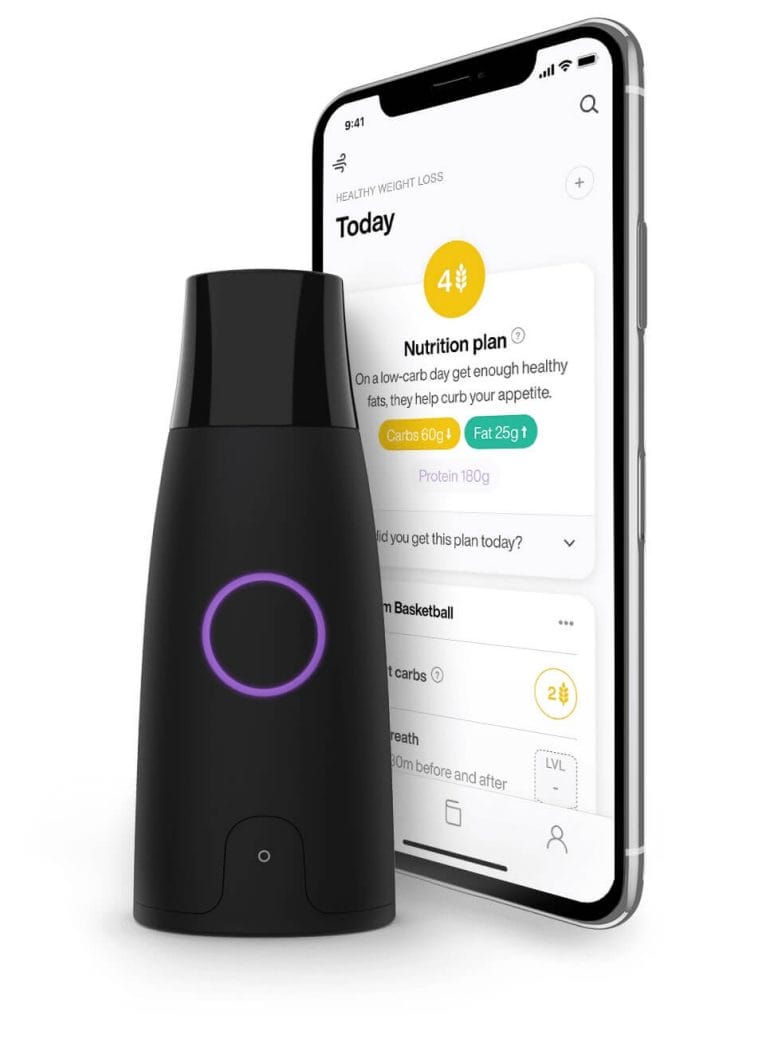
Summary
Lumen is a fascinating device that offers a unique way to measurably improve your metabolism and metabolic flexibility.
It’s also a great alternative to measuring ketone levels in your blood, urine or breath.
Lumen is a fascinating device that offers a unique way to measurably improve one’s metabolism and metabolic flexibility.
It’s also a great alternative to measuring ketone levels in your blood, urine or breath. I strongly believe that the sophistication of the device, combined with its unique and futuristic look, increases the chances of its effectiveness — in part because you want to keep using it and show it off to your friends and family.
The mobile app is also quite interactive and it inspires enough curiosity to help you keep going. While testing the device, I looked forward to my Lumen score every morning almost as much as I look forward to my WHOOP recovery score.
Of course, as I said earlier in this article, I have transitioned away from a purely ketogenic diet and no longer worry about whether I constantly stay in nutritional ketosis. As a result, I don’t use Lumen on a regular basis.
But if you’re just starting out on your keto or low-carb journey, or if you aren’t sure how particular foods impact your body, then it delivers valuable insights that can help you make better dietary choices.
Whether that’s worth the relatively high purchase price is a decision only you can make.

Michael Kummer is a healthy living enthusiast and CrossFit athlete whose goal is to help people achieve optimal health by bridging the gap between ancestral living and the demands of modern society.
Medical Disclaimer
The information shared on this blog is for educational purposes only, is not a substitute for the advice of medical doctors or registered dieticians (which we are not) and should not be used to prevent, diagnose, or treat any condition. Consult with a physician before starting a fitness regimen, adding supplements to your diet, or making other changes that may affect your medications, treatment plan or overall health. MichaelKummer.com and its owner MK Media Group, LLC are not liable for how you use and implement the information shared here, which is based on the opinions of the authors formed after engaging in personal use and research. We recommend products, services, or programs and are sometimes compensated for doing so as affiliates. Please read our Terms and Conditions for further information, including our privacy policy.
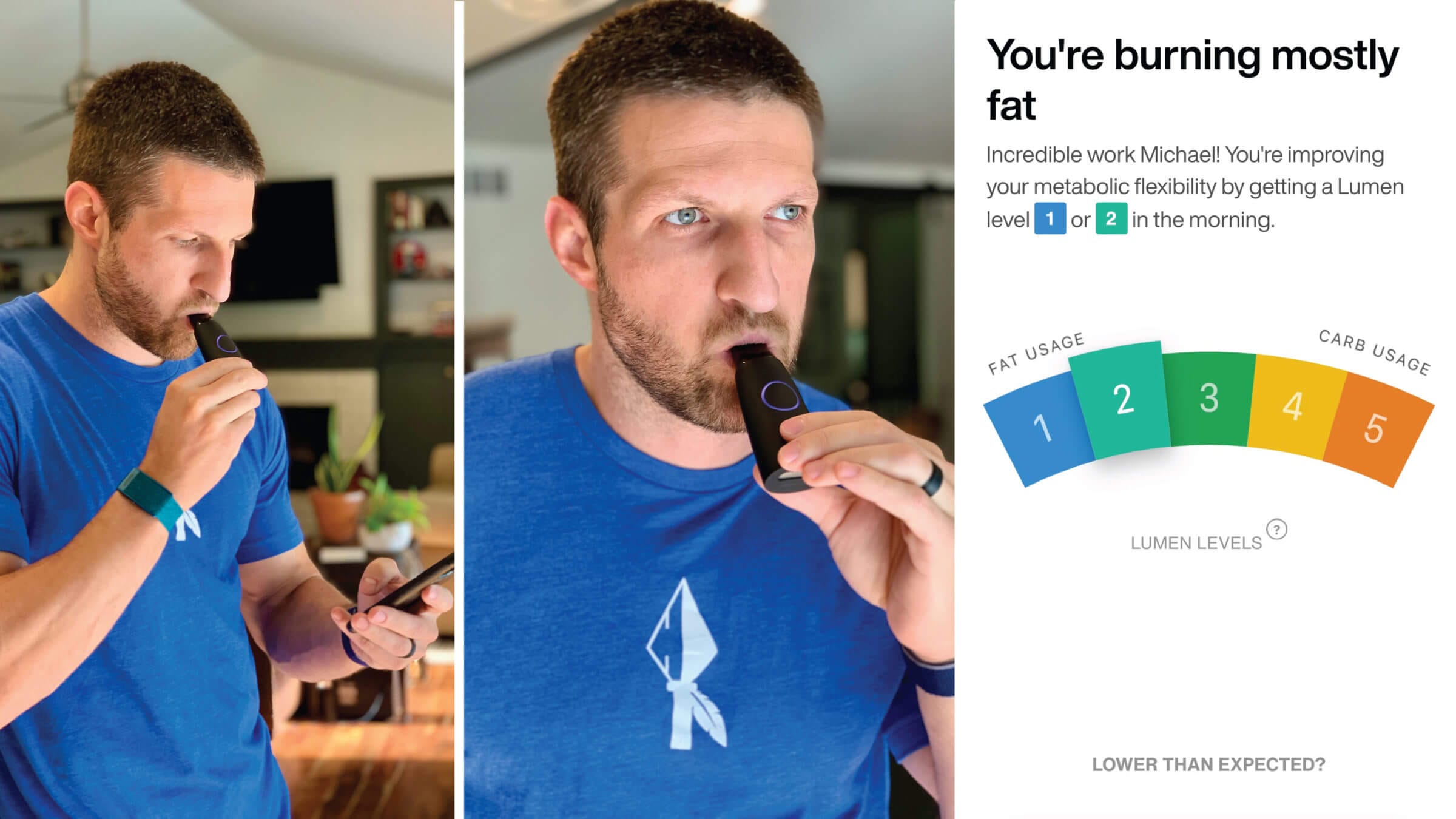
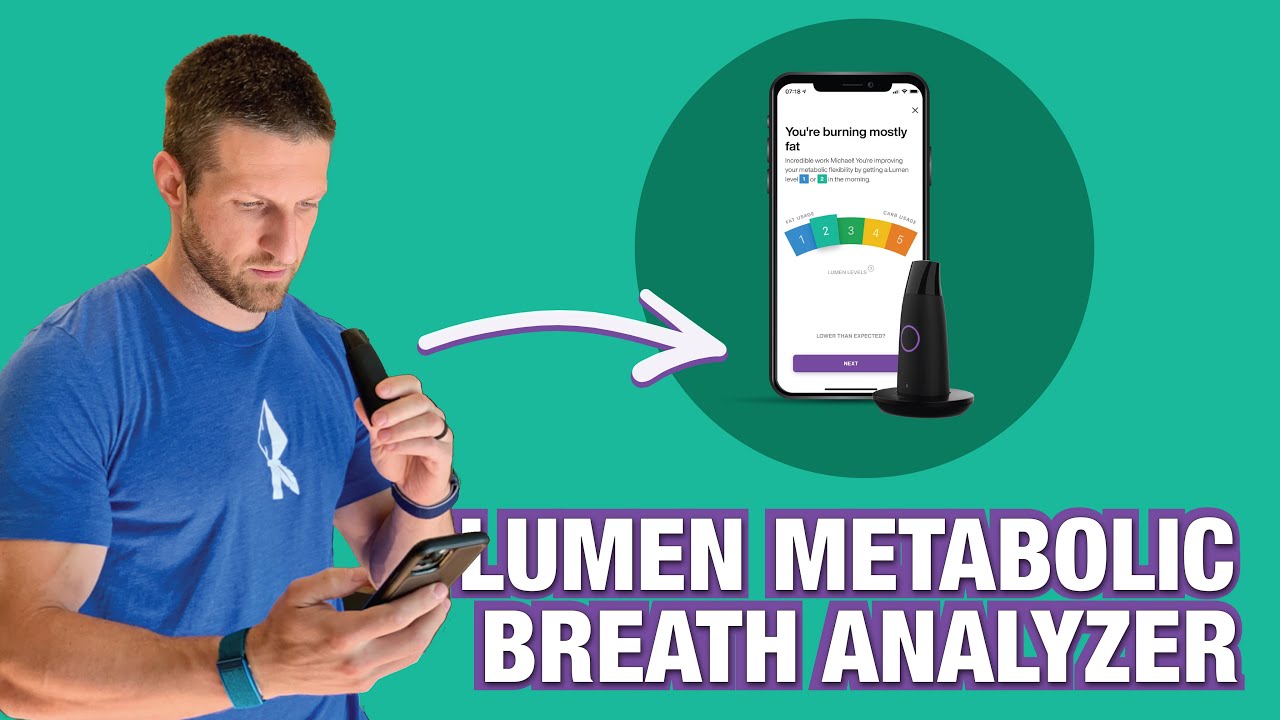
I am quite angry with Lumen . I bought the device and a prepaid subscription in the early part of 2023. I had difficulty using it not thinking that my mild asthma would be an issue . Since it was a month after my initial subscription, I couldn’t get my money back although I couldn’t use it . Now, two years later and working very hard on my diet to be able to use this tool, I learned one may be able to use it without the need of a subscription BUT contrary to me belief, If you bought it BEFORE July 2023 , you cannot be autonomous . That doesn’t seem to be fair . If it’s a matter of hardware , since I bought my tool at the same price, if not higher than the newer , I should have the same benefit , no? If the hardware was changed, they should change it out for the early adapters . If it’s a matter of software , it’s their fault for not creating something that could be updated . Again they should provide an updated model . Having been in the software industry, this is what I would have done . Poor customer service in my opinion. Wouldn’t trust them again.
Hey Deborah,
I’m sorry to hear about your experience. Have you reached to Lumen about it? Did they confirm your device cannot be used without a subscription?
Cheers,
Michael
Michael,
Thanks for the note on biosense vs lumen.
What would you recommend for a beginner like myself? You mentioned that you preferred using the biosense monitor in an earlier review of biosense
It depends a few factors. If you need coaching and meal suggestions, Lumen is a great tool because it gives you that. On the other hand, if you know what you’re doing and just need the most accurate breath ketone numbers, then Biosense is the way to go.
What is the difference between Lumen and the biosense ketone monitor. Seems like they are both breath based
Hi Anand,
on a technical level, Biosense measures acetone (a ketone body) and Lumen measures CO2. While these are completely different metrics, they both indicate what fuel your body is burning for energy.
Cheers,
Michael
I’ve been searching for an in depth- unbiased review and this is it! Thanks, Michael.
I appreciate that you also call out what the Carb points equate to in grams. It’s been surprisingly easy for me to follow low carb using this app, as I have struggled in the past.
I also appreciate that you showed how you are suggested a high carb day! That’s what I was wondering and how I found your article. I was starting to feel discouraged that mine is only offering low carb… but it may be correct, since I am probably eating enough (too many) carbs. I will continue on this path as I am enjoying it so far! (About one week in)
Hoping for some weight loss!
Thanks for the feedback Kelly, I appreciate it!
PS: Apologies for the late reply. Your comment got accidentally deleted by my anti-spam plugin and I just found out about it.
I’v been struggling with my weight for the last ten years. In my teens I was really active, but an old sports injury has caused problems in my knees. Now I’m in my early thirties and I’m about a 100 pounds over weight, and I feel my knee problems won’t be as bad if I can lose at least 75 pounds. Maybe once I know what my body uses more then I can work on my problem areas.
How does it differ from the Ketonix?
https://www.ketonix.com/
Hi Maria,
I’ve never used Ketonix and don’t know how accurate it is or whether the sensor has to be replaced after a certain amount of time.
But if you’re looking for a breath ketone monitor, check out Biosense: https://michaelkummer.com/biosense-review/
Cheers,
Michael
For RER measurement, all I was looking for was the RER measurement. As Jen points out, CO2 and O2 levels would be next best. With the lack of O2, just a plain CO2 % measurement from normalized/comparable inhale volume would be a good data point. I think that is what Lumen has. But they are claiming waay more than that. And its dangerous to add-on recommendations loosely disguised as motivations.
I worry about potential users of Lumen who will trust the system without understanding the science.
Amen.
Well said. If your weighing scale told you “You are heavier today by a 1 unit than yesterday” or “You are somewhat lighter than yesterday but I cant tell you by how much” would you trust the scale? RER measurements have a very tight binding to 0.7 and 1.0 as the CO2/O2 ratios that indicate fat vs Carb fuel use.
This relative stuff will work if you are in the correct range. I can see why the blog author had messed up readings when calibration was not followed. I think the extra carb load suggested is to make sure you are as near to 1.0 as possible.
I think the idea here of a handheld device is excellent. I would want one myself. But after reading the blog and more importantly the comments, I am going to wait for version 2/3 of this device that provides me with the raw reading of what is being measured.
it’s good Marketing, thats all, this product is worthless for a Triathlete/Duathlet, the Garmin integration is so bad, you can set a Activity Level for Ironman, but you could’nt add Triathlon/Duathlon workouts.
The Workouts you can add are only duration based, but not intensity based!
You can’t eat 30-45 minutes after a hard workout because you have to wait for your Lumen measurment, at all the support is bad, no solutions to fix problems since 4 month of using and when you want to send it back, they say it’s not possible
I’ve been doing keto, with 20 – 25 net carbs /day, for a year, and lost 65 lbs, but over the past two months, without any change in diet, 7 lbs have crept back on, despite blood ketone levels of 1.4 – 2.8 and GKI in the 2.5 to 4.6 range. It seems like my body has adapted to ketosis. Do you think occasional higher carb days would help break through this stage, and that this device could help determine the optimal days to do that?
Hi David,
I don’t being fully fat-adapted causes weight gain. I gained weight on keto too but it was all lean muscle mass. Do you think your weight gain is due to fat gain? If so, you might be eating significantly more calories than what you burn. While being on keto gives you some wiggle room to consume a few extra calories, if you significantly overeat, the body has no way other than to store the excess energy as fat.
Also, what types of fat are you eating and how exposes are you to environmental toxins (i.e., endocrine disruptors from skincare products or plastics)? Vegetable oil as well as xenoestrogens can mess with your fat metabolism.
Also, I don’t know anything about your physical appearance but assuming the proper lifestyle and diet, the body typically arrives at a weight that appropriate, despite a temporary weight loss that surpassed the “ideal” weight.
Excellent thorough review. Thank you for the information.
Aww bro, I did a little research and purchased lumen, now waiting for it to arrive and excited did more searching and found your article. Which is extremely helpful because I also do keto getting about 15/20 net carbs, 150/200g of protein and 175g of fat. I was looking forward to see how much im really burning fat, or glucose especially since I often trend up higher on protein than others on keto, and was ready to see how much gluconeogenises was going on. As your afformentioned I often train fasted as well and have body release glucose and often feel am I really burning for or is body steady making glucose from proteins for energy. Was hoping this device would add some insightful information. However it appears it may had more confusion. Maybe maybe when I get back in to a bulk or cyclic keto diet it will be more helpful. All in all thanks for the insight and research, gives me plenty of information and troubleshooting you already put in. Great article..
Hi Michael,
gluconeogenesis is a pretty constant and demand-driven process. Eating more protein won’t influence that. However, eating a ton of protein (or anything else for that matter) will likely trigger an insulin response because the excess energy needs to go somewhere (into your fat tissue) and that’s what insulin is for.
I’m actually experimenting with different types of protein (overload) right now and will publish my findings in a YouTube video shortly.
Cheers,
Michael
Thanks for this review. I follow some of these heath wellness choices, so I am on your side of the coin. I suppose though whenever I hear that our ancestors had healthy diets it makes me say, okay, I hear that but they lived very short lives (so how great could that diet have really been… AND we also have evolved over time and have different lifestyles etc etc etc some humans have different goals (athletes for instance) and of course there is advent of fire.) So that “what ancestors ate” argument is thin when said alone, and I think a better pitch would be simply about the benefits of knowing our bodies and nutrition better, not comparing us to ancestors who passed away very young, before fire –and do we really even know what they ate (read on…)
(And yes I know there are other factors, this is just a brief comment because when I see this sentence* articulated without context it normally makes me turn off from the person talking — and you seem committed and nice). Thanks and thanks again for this article. Wishing you the best. *The goal of low-carb diets like keto and paleo is to help you adopt eating habits that mimic those of our healthier ancestors, <–That is the sentence and I call attention to "mimic" and "healthier"
PS here also is just a snippet on the open question of what even a paleo diet was – again a reason to leave it out of the "pitch" I think. It is said there are also differing kinds of diets our ancestors ate – based on region – and that may be another entire way to look at this. All IMHO – here you will see evidence of grains that were eaten – https://www.discovermagazine.com/health/even-our-ancestors-never-really-ate-the-paleo-diet and here's another about Oats and our ancestors – https://www.nationalgeographic.com/culture/food/the-plate/2015/09/11/ancient-oat-discovery-may-poke-more-holes-in-paleo-diet/
Again, that sentence jumped out at me. To your and everyone's health.
Hi there!
Our ancestors didn’t die as young as you might think. The average life expectancy was just low because infant and childhood mortality were high (not related to diet). Based on the latest scientific evidence, humans evolved on a diet that was rich in animal protein and fat. That’s the primary driver (as far as we know) that our brains grew. If we had kept eating plants, we’d still be sitting on trees spending most of our time looking for and digesting plants.
While it’s certainly true that there is no one paleo diet but a variety (depending on where our ancestors lived), the basic principles remain the same: High in pastured or wild-caught animal products (fat and protein) and low in carbs. Plants and other carbs were survival foods if no better source of food was available.
Sure, our ancestors ate what they found, including wild grains and legumes and the fact that they didn’t cultivate those crops made it virtually impossible to eat those foods in larger amounts. When they started farming (~10k years ago), their brains shrank and so did their overall height — a sign of degeneration. Combine that with the fact that pretty much all modern diseases are caused by a malfunctioning metabolism and insulin resistance and you understand why high-fat, low-carb eating makes sense.
This item is fascinating as is your very detailed review. I am very intrigued. I am a 48-year-old, overweight male, (5’11″/245lbs) who is interested in dialing in my weight and slowly overhauling my eating and exercise regime. I am very interested in this device but after more reading on other pages, it seems like this is a device that was initially created for younger, healthier people. Is that your understanding? Thank you.
Hi Shawn,
Thanks for your comment — great question!
I didn’t get that impression and believe that Lumen can support your journey regardless of how old or fit you are!
Cheers,
Michael
Hey Shawn did you take the plunge buddy? I’m in a similar position to you and was curious.
The ketogenic diet originated as a means of treating intractable epilepsy. It means getting adequate protein, with the entire balance of calories from fat. If you consume excess protein the Lumen will give you the surprising result that you are burning carbs. This is not inaccurate or paradoxical. Lumen is estimating the ratio between the amount of CO2 produced in metabolism and O2 used (RER).
Good point, along with high protein can keep your body using glucose but not directly from carbs but from the protein itself form gluconeogenesis. Keto is meant to be moderate protein. Often people including myself get high protein… trying to find the balance and hope this device can help
The main reason Lumen is not always accurate is because the ratio of fats to carbs should normally be estimated based on the ratio of CO2 to O2 in the breath, not CO2 alone. Lumen doesn’t contain an O2 sensor (I haven’t heard an explanation why – maybe because it would make the device even more expensive), so instead they have to try and estimate it based on flow rate with a large reference data set.
Yes, Lumen has a number of validation studies, but none of these are peer reviewed and the paper they do have is a highly cherry-picked summary of the separate studies, which Lumen does not share.
Just looking at the summary study they do share:
1. 31 health subjects took part in the study, but the conclusions only say “the Lumen Index was found to highly correlate with changes in the RER of a subject”, not all of the subjects. Figure 1 only shows the correlation for subjects #15 and 16, for instance.
2. Likewise, “in an ANOVA repetitive measurement, the Lumen method was found to effectively differentiate between the different metabolic states of *an* individual following a low and high carb diet”
3. The charts in Figure 2 show averages, but do not give a sense of standard deviations for measurements
4. Figures 3 – 6 show the “Lumen Level change” measured using the device but not the RER assessed by the device and whether that was accurate.
5. Lumen makes statements such as “in a within-subject correlation, the changes in Lumen Level were found to highly correlate with changes in RER”, but don’t give the correlation co-efficient R. On that note, the study makes frequent references to p values alone, but this is generally not advised:
https://www.nature.com/news/statisticians-issue-warning-over-misuse-of-p-values-1.19503
“In its statement, the ASA advises researchers to avoid drawing scientific conclusions or making policy decisions based on P values alone. Researchers should describe not only the data analyses that produced statistically significant results, the society says, but all statistical tests and choices made in calculations. Otherwise, results may seem falsely robust.”
Thanks for the detailed feedback Jen! Let me dive into this and get a comment from Lumen. If you don’t mind, I’ll include some of your info in my post when I update it.
Hi Jen,
Lumen just published more validation data (still not peer-reviewed yet). Check it out, I’d love to hear your analysis of it: https://www.biorxiv.org/content/10.1101/2020.05.05.078980v1